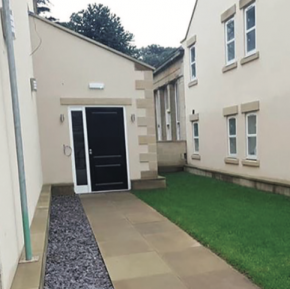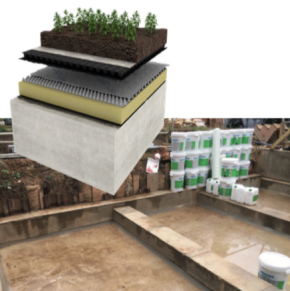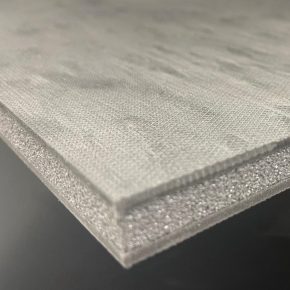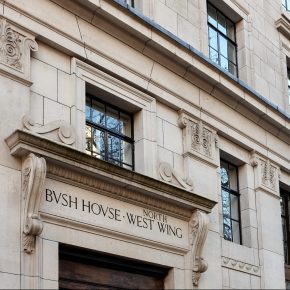
Design & build waterproofing philosophies for podium decks, buried roofs, balconies and terraces
Delta Membranes discusses the common pitfalls when it comes to designing a waterproofing system for podium decks, buried roofs, balconies and terraces.
The trend for outdoor living has led to a market growth in external balconies, large roof/ground floor terraces and patios. As well as adding monetary value to a property, external areas can be aesthetically pleasing, and can also help to promote health and well-being benefits.
Balconies, roof terraces and patios are part of a trend which is inspired by aspirational and luxury living in suburban and rural areas alike.
 When specified with the correct waterproofing systems, all types of installations are possible, however the design needs careful consideration and a CSSW qualified Waterproofing Design Specialist should always be consulted at the earliest opportunity.
When specified with the correct waterproofing systems, all types of installations are possible, however the design needs careful consideration and a CSSW qualified Waterproofing Design Specialist should always be consulted at the earliest opportunity.
The primary requirement of waterproofing design is the prevention of water ingress and the management of water and water vapour movement through and out of a structure. The design ethos for waterproofing podium decks, buried roofs, balconies and terraces is identical to that used in any below ground area of a structure.
There are many different approaches to structural waterproofing. The construction methods will in part contribute to the specification of types of waterproofing systems and may also determine the overall structural waterproofing strategy.
Structural waterproofing falls into 3 categories:
Type A – Barrier Protection
Type B – Structurally Integral Protection Type C – Drained Protection
With 3 grades:
Grade 1 – Some water seepage and damp are tolerable depending on the intended use
Grade 2 – No water penetration is acceptable
Grade 3 – No dampness or water penetration is acceptable
Successful waterproofing design lies with choosing the most appropriate combinations of structure and waterproofing system to achieve pre-determined performance levels and criteria.
In order to design out risk of failure due to less than adequate workmanship, damage or defects on site it is also important to consider practicality and ease of installation, the phasing of the construction process and the scope for testing and certifying during construction.
In summary, it is the duty of the waterproofing designer to assess a variety of factors and variables simultaneously and to come to a logical and balanced decision regarding the design. Working as part of the design team and keeping abreast of changes, revisions and updates to the project is important because these could have a bearing upon the environmental, structural and other stresses that may be imposed upon the waterproofing system and adaptations may need to be made.
In addition, ensuring proper training, application expertise, certification and testing procedures on the part of the installing contractor is also critical. Whether the proposed construction is warm roof, cold roof, green roof, blue roof or a combination of types the principles stated here will apply in equal measure to achieve a successful long-term outcome.
Delta Membrane Systems,
Delta House,
Merlin Way,
North Weald,
Epping,
Essex,
CM16 6HR
United Kingdom
Visit Delta Membrane Systems' website
Visit Supplier's page
Latest news

29th April 2024
Hush: New Hushlay options offer acoustic upgrade potential
Leading UK acoustic systems manufacturer Hush Acoustics has introduced two additional variants of its Hushlay Soundmatting product.
Posted in Acoustics, Noise & Vibration Control, Articles, Building Industry News, Building Products & Structures, Building Services, Facility Management & Building Services, Floors, Innovations & New Products, Insulation, Restoration & Refurbishment, Retrofit & Renovation
29th April 2024
Digital Construction Week 2024 speaker programme announced
The programme at Digital Construction Week is carefully designed to help you keep up with the fast pace of innovation in the built environment.
Posted in Articles, Building Industry Events, Building Industry News, Building Products & Structures, Building Services, Exhibitions and Conferences, Innovations & New Products, news, Posts, Restoration & Refurbishment, Retrofit & Renovation, Seminars, Sustainability & Energy Efficiency
29th April 2024
Steel Window Association - for the specialists in domestic and commercial refurbishment of steel windows
The UK-wide Steel Window Association members are the established, proven experts in the renovation and sympathetic refurbishment of steel windows and doors in both domestic and commercial premises.
Posted in Architectural Ironmongery, Articles, Building Associations & Institutes, Building Industry News, Building Products & Structures, Building Systems, Doors, Glass, Glazing, Restoration & Refurbishment, Retrofit & Renovation, Steel and Structural Frames, Windows
29th April 2024
The Rooflight Association: Rooflights & Fire Regulations - what you need to know
The Rooflight Association has published a series of ‘Quickguides’, covering the fire rating requirements for use of rooflights in buildings for each of the four devolved UK nations.
Posted in Articles, Building Associations & Institutes, Building Industry News, Building Products & Structures, Building Regulations & Accreditations, Building Services, Ceilings, Health & Safety, Innovations & New Products, Lighting, Publications, Restoration & Refurbishment, Retrofit & Renovation, Roofs, Security and Fire Protection, Walls, Windows
 Sign up:
Sign up: